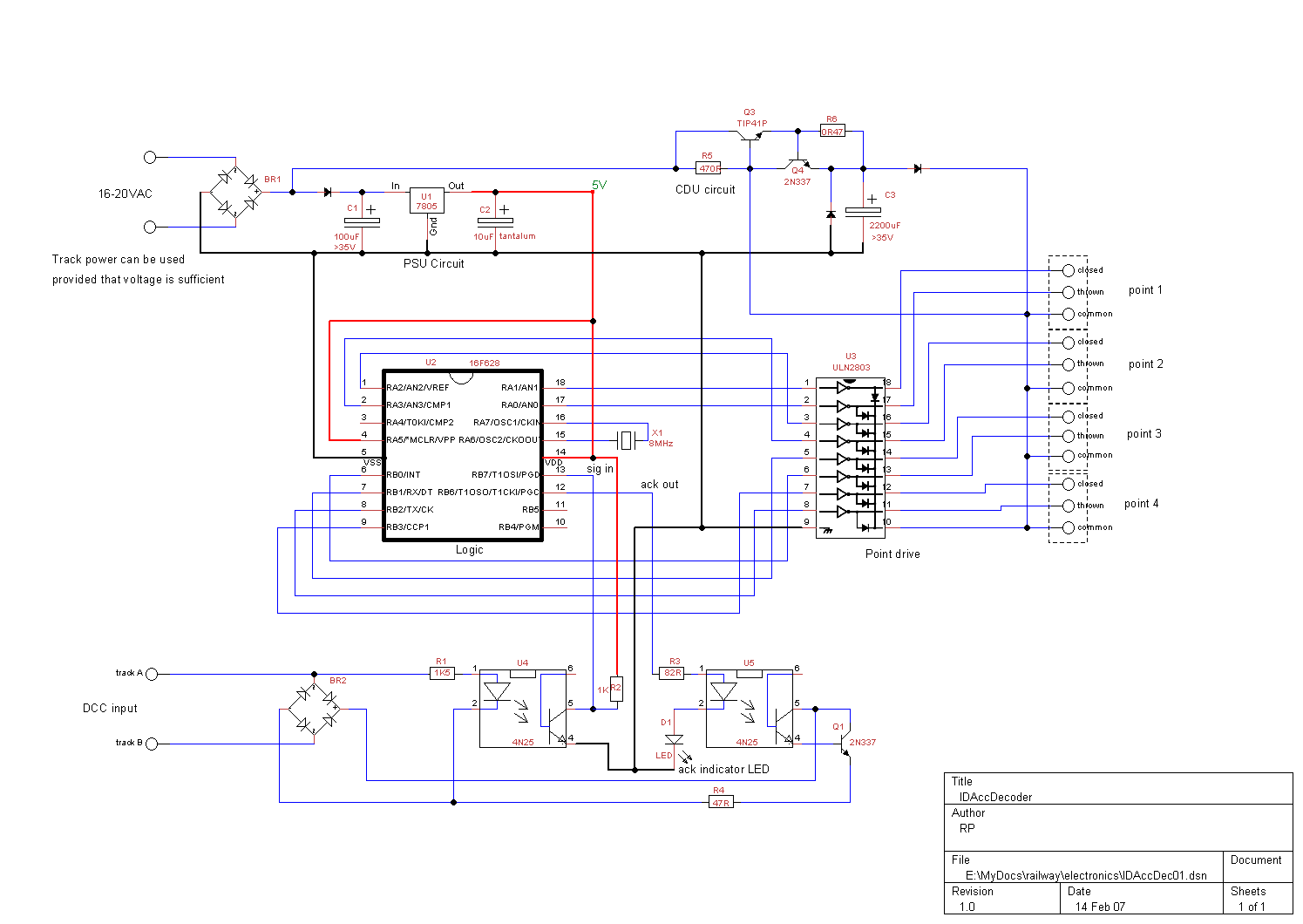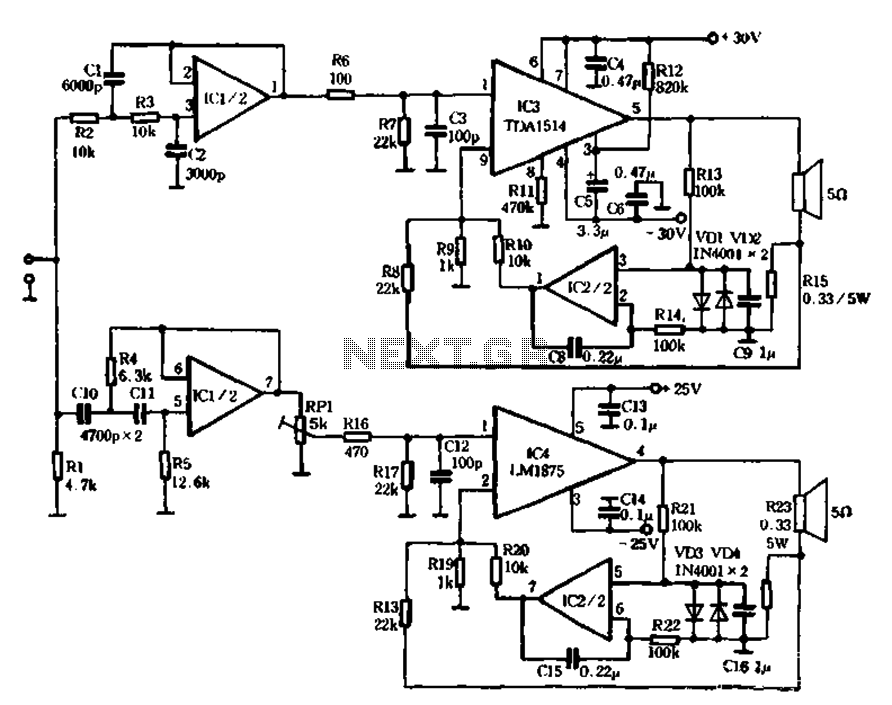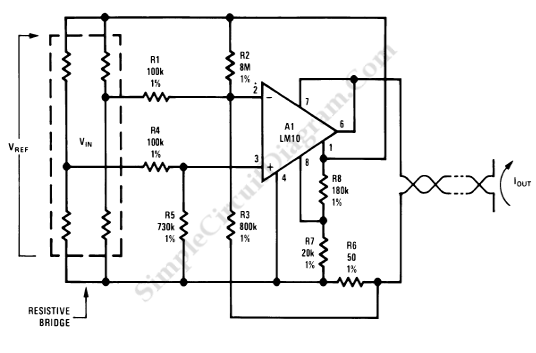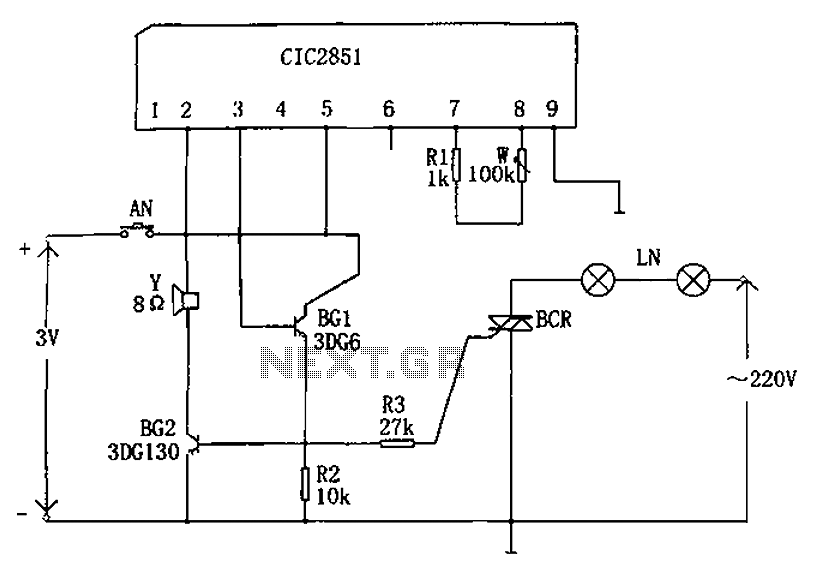
Infrared transmitter circuit schematic
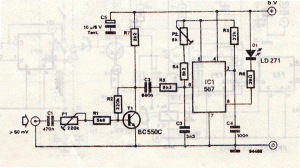
This infrared transmitter utilizes pulse width modulation (PWM). The transmitter is equipped with an LM567 tone decoder circuit. An audio signal (at least 50 mV peak-to-peak) is amplified with transistor T1 and subsequently used to modulate IC1. The frequency of the infrared transmitter is adjustable via potentiometer P2, ranging from 25 kHz to 40 kHz. The circuit diagram includes components such as EPM7128STC100-15, DG413DY, and AD620AR.
The infrared transmitter circuit operates on the principle of pulse width modulation (PWM) to encode audio signals for wireless transmission. The LM567 tone decoder serves as a critical component, enabling the detection of specific frequencies, which enhances the system's ability to filter out noise and improve signal integrity. The audio input, which must meet a minimum amplitude of 50 mV peak-to-peak, is first amplified by the transistor T1. This amplification stage is essential to ensure that the audio signal is sufficiently strong for effective modulation.
The modulation is performed by IC1, which is responsible for converting the amplified audio signal into a modulated infrared signal. The frequency of this modulation can be fine-tuned using the adjustable potentiometer P2, allowing for flexibility in the operating frequency of the transmitter. This adjustment capability is crucial for optimizing performance in various environments and applications.
The circuit also includes additional components such as the EPM7128STC100-15, which is a field-programmable gate array (FPGA) that can be used for further processing or control functions within the system. The DG413DY is a dual analog switch that may be utilized for routing signals within the circuit, while the AD620AR is an instrumentation amplifier that can enhance the signal conditioning stage, ensuring that the audio signal is clean and accurately represented before modulation.
Overall, this infrared transmitter circuit is designed for efficient audio signal transmission using infrared light, making it suitable for various applications, including remote controls, wireless audio systems, and other communication devices that require reliable and effective signal transmission.This infrared transmitter use PWM, pulse width modulation The transmitter is equiped with LM 567, tone decoder circuit. Audio signal ( at least 50mVvv ) is amplified with T1 and then it is used to modulate IC1. Infrared transmitter frequency is adjusted with P2 between 25 and 40KHz. IR transmitter circuit diagram EPM7128STC100-15 DG413DY AD620AR. 🔗 External reference
The infrared transmitter circuit operates on the principle of pulse width modulation (PWM) to encode audio signals for wireless transmission. The LM567 tone decoder serves as a critical component, enabling the detection of specific frequencies, which enhances the system's ability to filter out noise and improve signal integrity. The audio input, which must meet a minimum amplitude of 50 mV peak-to-peak, is first amplified by the transistor T1. This amplification stage is essential to ensure that the audio signal is sufficiently strong for effective modulation.
The modulation is performed by IC1, which is responsible for converting the amplified audio signal into a modulated infrared signal. The frequency of this modulation can be fine-tuned using the adjustable potentiometer P2, allowing for flexibility in the operating frequency of the transmitter. This adjustment capability is crucial for optimizing performance in various environments and applications.
The circuit also includes additional components such as the EPM7128STC100-15, which is a field-programmable gate array (FPGA) that can be used for further processing or control functions within the system. The DG413DY is a dual analog switch that may be utilized for routing signals within the circuit, while the AD620AR is an instrumentation amplifier that can enhance the signal conditioning stage, ensuring that the audio signal is clean and accurately represented before modulation.
Overall, this infrared transmitter circuit is designed for efficient audio signal transmission using infrared light, making it suitable for various applications, including remote controls, wireless audio systems, and other communication devices that require reliable and effective signal transmission.This infrared transmitter use PWM, pulse width modulation The transmitter is equiped with LM 567, tone decoder circuit. Audio signal ( at least 50mVvv ) is amplified with T1 and then it is used to modulate IC1. Infrared transmitter frequency is adjusted with P2 between 25 and 40KHz. IR transmitter circuit diagram EPM7128STC100-15 DG413DY AD620AR. 🔗 External reference
